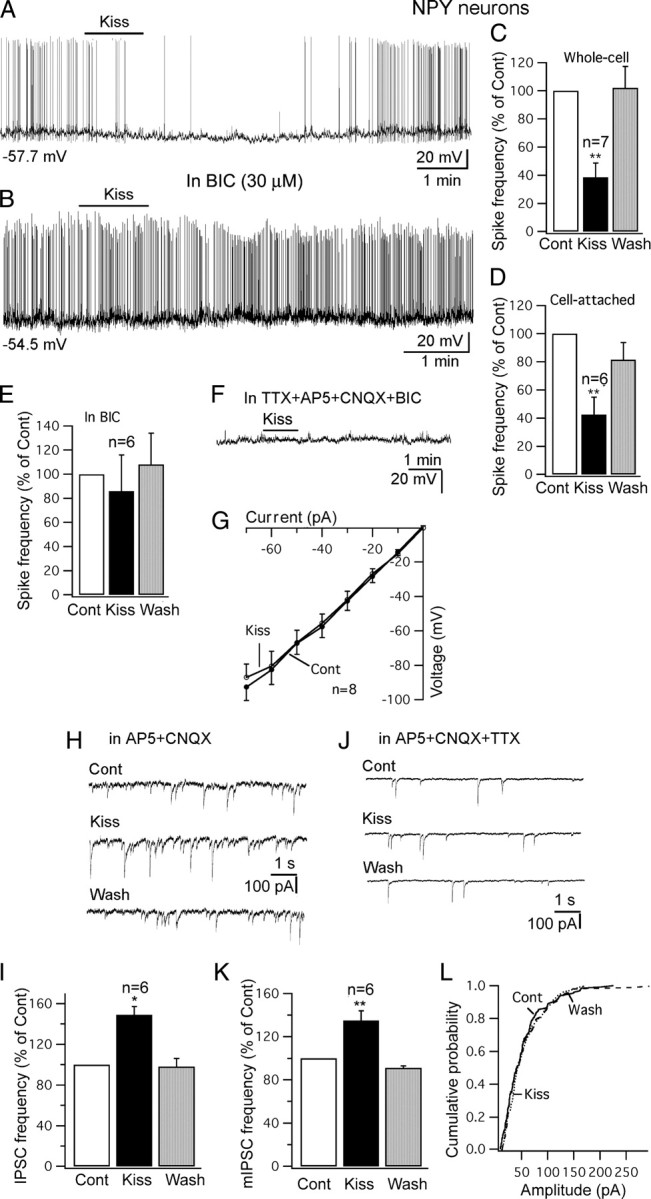Figure 10.

Kisspeptin inhibits NPY cells in arcuate nucleus. A, Trace showing that application of kisspeptin (1 μm) inhibits the firing and hyperpolarizes an NPY cell with whole-cell recording. B, Trace showing that kisspeptin (1 μm) failed to inhibit the firing of an NPY cell in the presence of BIC (30 μm) in the bath. Starting membrane potential shown under the trace. C, D, Bar graphs showing the reversible decrease of spike frequency of NPY cells by kisspeptin (1 μm) with whole-cell recording (C) and cell-attached recording (D). E, Kisspeptin failed to decrease the spike frequency of NPY cells significantly in the presence of BIC (30 μm). F, In the presence of TTX (0.5 μm), AP5 (50 μm), CNQX (10 μm), and BIC (30 μm), kisspeptin did not change the membrane potential of a NPY cell. G, The current–voltage relationship of NPY cell with current injection from −70 to 0 pA before and after application of kisspeptin (1 μm). H, IPSCs before and during application of kisspeptin (1 μm) and after washout. IPSCs were recorded with a KCl pipette solution in the presence of AP5 and CNQX in the bath. I, Bar graph showing the increase of IPSC frequency by kisspeptin on NPY cells. J, mIPSC traces before and during application of kisspeptin (1 μm) and after washout. K, The increase by kisspeptin of mIPSC frequency on NPY cells. L, Kisspeptin did not change the amplitude of mIPSCs on NPY cells. *p < 0.05; **p < 0.01; ANOVA. Error bars indicate SEM.
